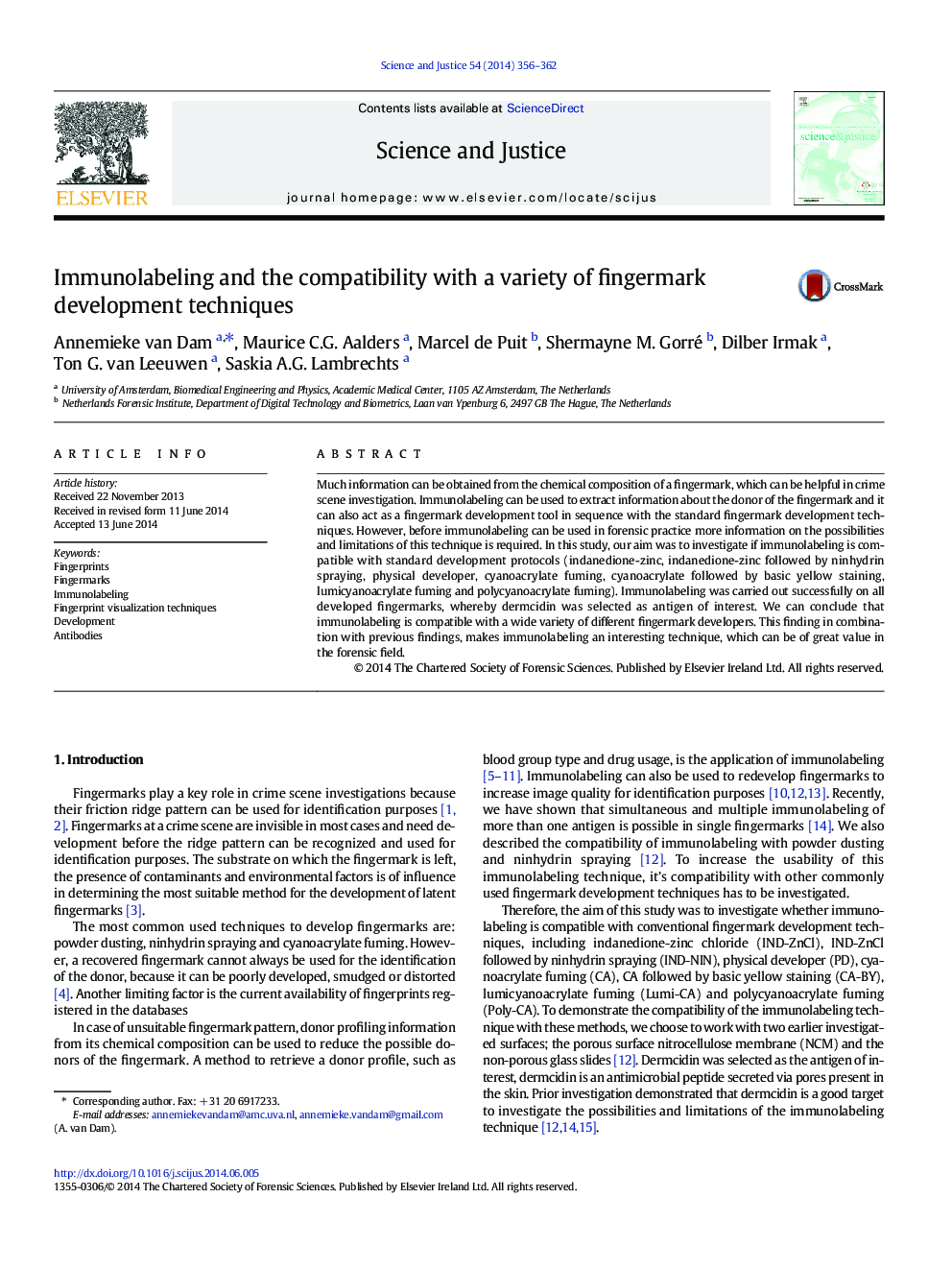| Article ID | Journal | Published Year | Pages | File Type |
|---|---|---|---|---|
| 10255526 | Science & Justice | 2014 | 7 Pages |
Abstract
Much information can be obtained from the chemical composition of a fingermark, which can be helpful in crime scene investigation. Immunolabeling can be used to extract information about the donor of the fingermark and it can also act as a fingermark development tool in sequence with the standard fingermark development techniques. However, before immunolabeling can be used in forensic practice more information on the possibilities and limitations of this technique is required. In this study, our aim was to investigate if immunolabeling is compatible with standard development protocols (indanedione-zinc, indanedione-zinc followed by ninhydrin spraying, physical developer, cyanoacrylate fuming, cyanoacrylate followed by basic yellow staining, lumicyanoacrylate fuming and polycyanoacrylate fuming). Immunolabeling was carried out successfully on all developed fingermarks, whereby dermcidin was selected as antigen of interest. We can conclude that immunolabeling is compatible with a wide variety of different fingermark developers. This finding in combination with previous findings, makes immunolabeling an interesting technique, which can be of great value in the forensic field.
Related Topics
Physical Sciences and Engineering
Chemistry
Analytical Chemistry
Authors
Annemieke van Dam, Maurice C.G. Aalders, Marcel de Puit, Shermayne M. Gorré, Dilber Irmak, Ton G. van Leeuwen, Saskia A.G. Lambrechts,
